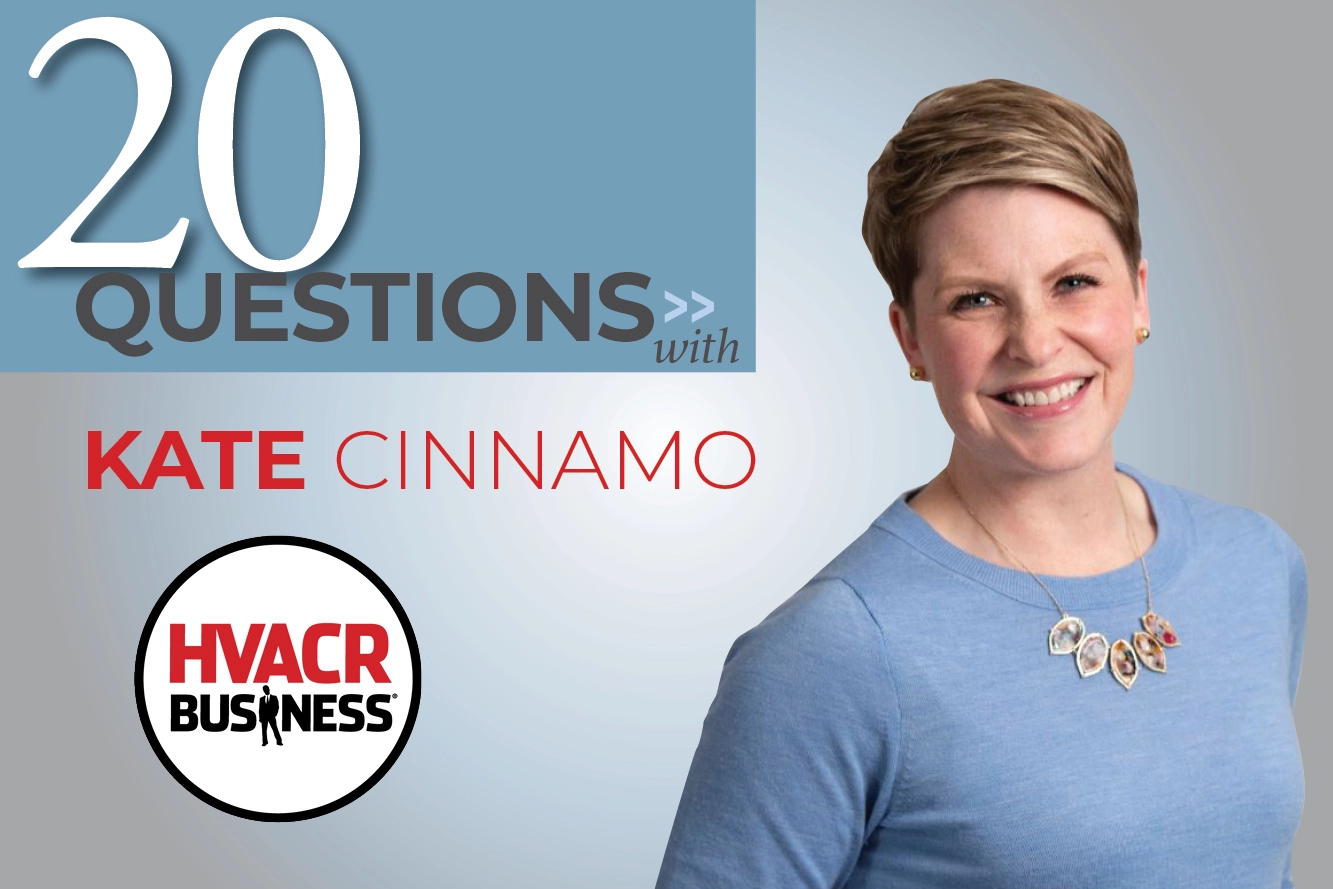HVACR Business Publisher Terry Tanker met with Steven Blue, CEO of Miller Ingenuity, author, keynote speaker and business coach. The two discussed company growth, profits, toxic employees, and Steven’s soon to be released book Outdo. Outlast. Outsmart.
1. Can you explain your company Miller Ingenuity to our readers?
For about 50-60 years, Miller Ingenuity has been providing innovative solutions for global customers that haul freight railroad and passenger trains.
2. You started your career as a factory supervisor - how did that prepare you to become a CEO?
I think it’s important to understand every aspect of a business before you’re ready to run it. When I began as a factory supervisor, I learned the people and production aspects of business. Over the years, whenever there was a tough assignment no one wanted to touch, I raised my hand and said, “I’ll fix that.” After twenty years, I’d been in every department of the company and knew it upside down and backward.
3. You’re a CEO, author, speaker, and business coach. Which do you enjoy most?
I like professional speaking, and do a lot of it, but I love being CEO. Only the CEO can make almost anything happen. When you have the top job, it’s a great opportunity to find out what you’re made of. All the stuff you’ve been talking about throughout your career, what management should and shouldn’t do … well, all of a sudden you’re it!
4. You’ve written two books and will soon release a third. Where do you find the time?
I spend a lot of time on long haul flights, and it’s not hard when the moment seizes me to bang out 2,000 words, and then the next day 2,000 more words. Then I take a break, and then do another 4,000 words. It’s a matter of unlocking what’s in my head – and good keyboard skills.
5. In your first book, Burnarounds, you describe unlocking the double-digit profit code. Can you briefly share the concept?
Most companies have cultures by default. I tell CEOs they should start with culture. When you build your culture by design into one that would serve you best, it’s the solid foundation of your house (if you will). If you don’t build your culture by design, it won’t matter what you do with sales or engineering because the culture is toxic or ineffective.
6. You also recommend “having a secret weapon.” What is it?
A killer senior leadership team that is so wound tightly together in mission, purpose and outlook, which is impossible for your competition to duplicate.
7. What is a $10 Million Employee?
Ask yourself which employees are liabilities and which are assets. The answer to that question determines whether your company is on a trajectory to triple its profits or tumble into oblivion.
8. If you determine you have 40 assets and 5 liabilities, what’s your next step?
The key to tripling profits in your company is to restructure your employee balance sheet to eliminate your toxic employees and make heroes out of your $10 million, golden asset employees.
9. How do toxic employees get into organizations?
First know this: you have them. They are wrecking your company as you read this. As the CEO, you have allowed this condition to exist. You have allowed your HR people to bamboozle you into instituting 12-step sensitivity training programs. If you are a large mechanical company, you’ve allowed your union negotiations to produce agreements that tolerate toxic employees. Only you, as CEO, can fix it.
10. Do you have an example we can all relate too?
On a flight one time, I encountered the King Kong of flight attendants. Immediately, he barked at the business class passengers — supposedly the airline’s important customers — to, “Don’t move until I tell you to move!” Then, he decided to be a comedian, telling everyone, “Republicans in the front, Democrats in the back!” I don’t care what party you belong to, that’s insulting. He carried on this way the entire flight, one insult after another. This person was representing the airline in a way I doubt they’d be happy about. I, and all the passengers on that flight, were exposed to a toxic employee of the airline.
11. Why can’t many CEOs detect the severity of their problems until it is far too late?
Sometimes CEOs get the job, feel as though they’ve arrived, and do little more than make strategic decisions. A lot of CEOs do that – they don’t want to get their fingers dirty. They don’t want to hear about problems. They tell their reports not to bring them problems, only solutions. So, instead of advising early on, the CEOs only hear of problems when spiraled out of control.
12. Do your direct reports bring you problems or solutions?
I never tell them not to bring me the problem. But, I do expect anyone who brings me a problem to have a solution in mind as well. As CEO, I can make things happen that they can’t. I see things they haven’t. I give them my advise and resources, but when they leave my office, the issue is theirs, not mine.
13. What is more common, companies with a sense of entitlement and complacency?
[Laughing] Well I haven’t heard that question before. Well they end up being the same thing, don't they?
14. Which comes first then?
I think entitlement comes first. It’s the mindset of: nothing can touch me; therefore, I can afford to be complacent.
15. Why are many leaders satisfied with “business as usual”?
Many people think it’s ok to have a rock solid business that has solid earnings that doesn’t have to be improved upon.
16. Why don’t they take the steps necessary to detect and solve problems that could make their companies better?
Many CEOs who seem happy with the status quo are afraid. They think touching something might make it worse instead of better. But I always tell them, if you’re not growing, you’re dying.
17. What do you fix first productivity, R&D, underperforming salespeople, an outdated factory or something else?
Get the infrastructure ready, get your productivity where it needs to be, get your factory where it needs to be, get your engineering where it needs to be, and customer service to be ready to handle the increase in business, and then move to sales.
18. How do you align every employee with profit?
Every single person in my company in incentivized with a cash reward if we hit our profit budget. It’s the same percentage of their pay regardless of whether they are in sales, manufacturing, or are executives. We all hit the profit goals or no one gets extras.
19. What’s the value in that?
You can’t have working toward achieving conflicting goals. Ultimately, it comes back to culture by design. You want your whole team working toward the same goal – the profitability of your company.
20. Can you tell us about your new book Outdo. Outlast. Outsmart?
The basic tenant of the book is that all growth isn’t good growth. It’s basically a blueprint for lasting, profitable growth that makes your competition irrelevant.






